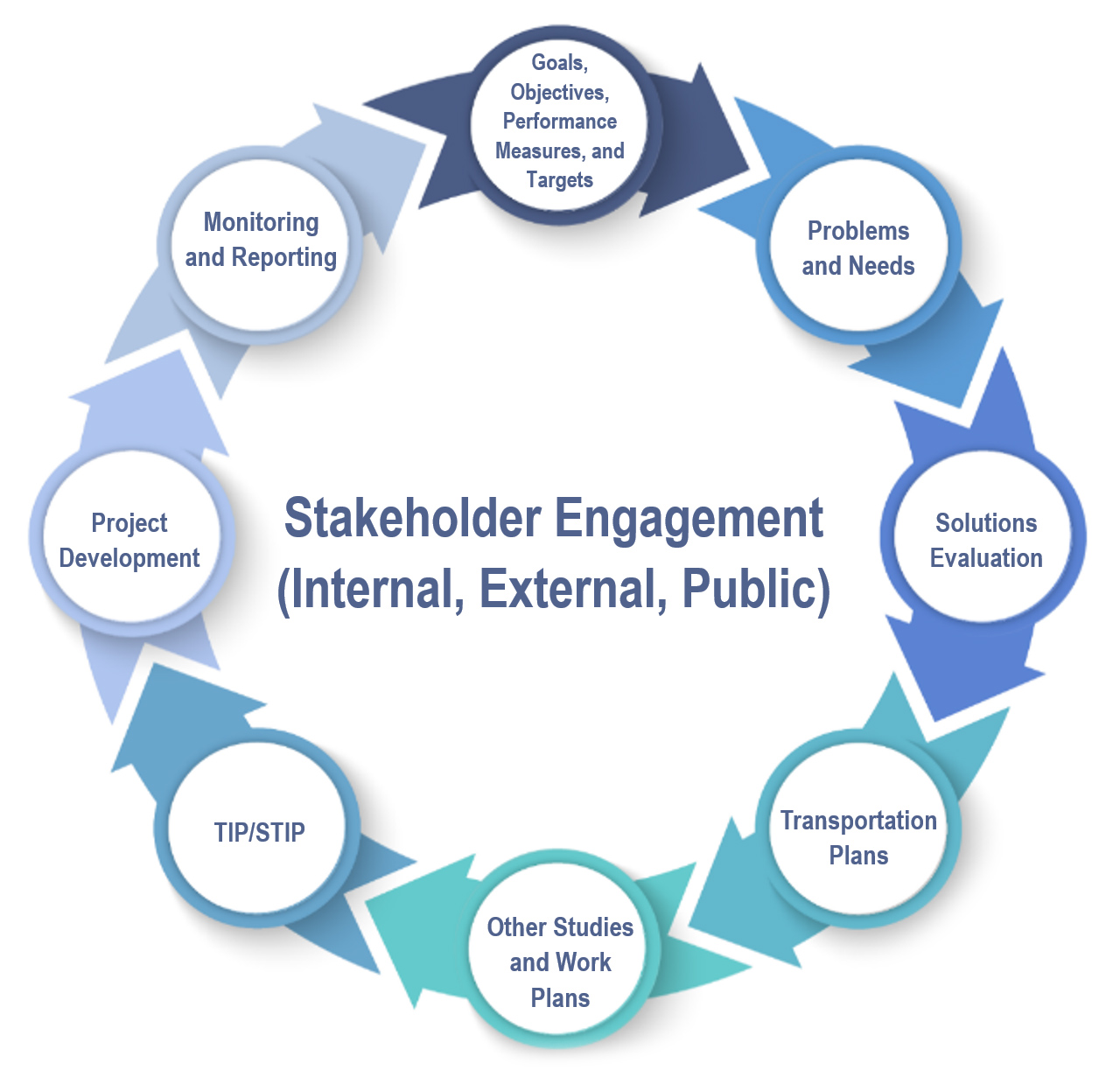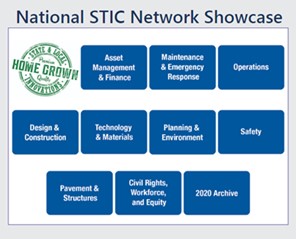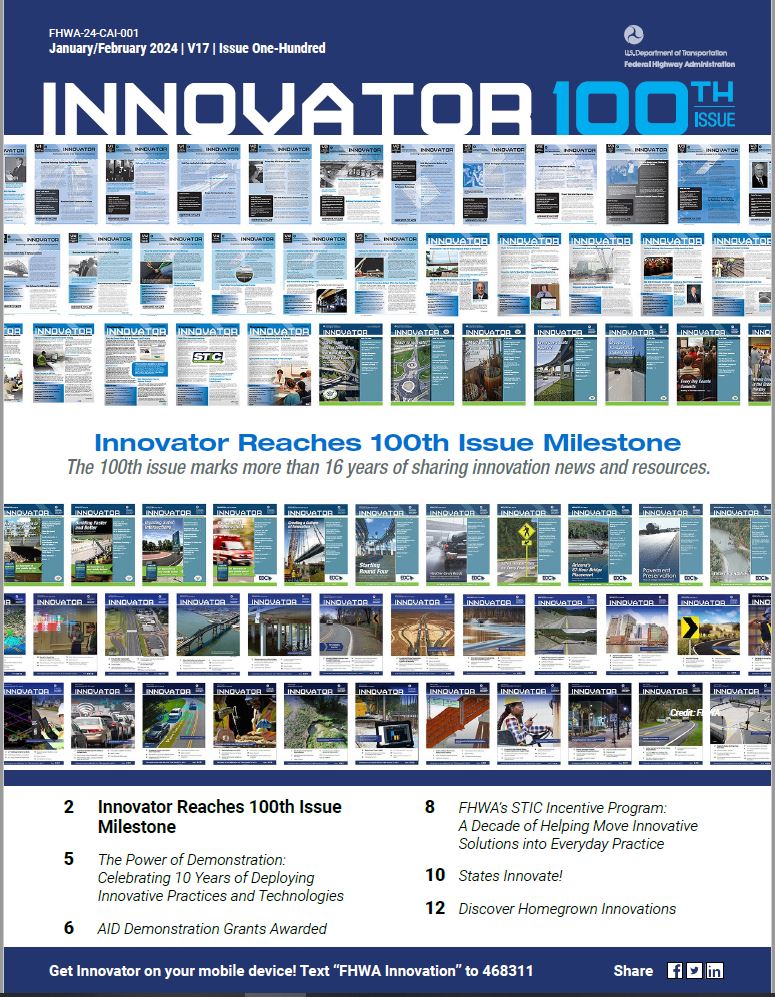January 11, 2024
Innovation of the Month: Integrating GHG Assessment and Reduction Targets in Transportation Planning
Quantifying GHG emissions is an important step in the process of integrating climate change into the transportation planning process. Transportation agencies, like State or local DOTs, Metropolitan Planning Organizations (MPOs) and transit agencies can estimate tailpipe GHG emissions in a variety of ways, from using fuel and vehicle travel data, to using travel models and scenario planning techniques. Transportation agencies also need to determine the scope of their inventory and measurement work, specifically whether they want to be inclusive of emissions from materials, fuels, construction, and maintenance.
When establishing measures and targets, a common first step is to develop a baseline. Many states have developed a GHG inventory, which may include total GHG emissions attributed to activities in the state, not just transportation. Transportation agencies can take different approaches to developing performance measures and setting reduction targets. The NCHRP report Assessing Mechanisms for Integrating Transportation-Related Greenhouse Gas Reduction Objectives into Transportation Decision Making describes two types of reduction targets-total quantity and per capita—and addresses different baseline types. More information on tools and methodologies can be found on the USDOT GHG Analysis Resources and Tools website

Step one of the transportation planning process- goals, objectives, performance measures, and targets- is animportant step to integrate GHG considerations into. (Credit: FHWA)
The Oregon DOT has multiple performance measures focused on reducing GHG emissions that are highlighted in an appendix of the Oregon Transportation Plan. Many of these measures are pulled from Oregon DOT’s Statewide Transportation Strategy and include GHG emissions for ground passenger and commercial services, emissions for freight, measures for improving the energy efficiency of Oregon’s vehicle fleet, and more. Oregon developed key performance targets for three main lenses the agency wants decisions to be made through – safety, equity, and climate. The climate targets include reducing passenger vehicle miles travelled per capita by 20 percent and transitioning to cleaner vehicles and fuels to reduce carbon dioxide equivalent per mile by 77 percent.
In June 2022, the National Capital Region Transportation Board (TPB), the MPO for the Washington D.C. area, established targets to reduce on-road GHG emissions by 50 percent from 2005 levels by 2030. These targets were integrated into the Visualize 2045 long-range transportation plan. TPB is among the first MPOs to voluntarily adopt transportation specific GHG emissions reduction targets.
To learn more about Integrating GHG Assessment and Reduction Targets in Transportation Planning, contact David D'Onofrio, FHWA Office of Natural Environment, or Jim Thorne, FHWA Office of Planning, or subscribe to the team’s e-newsletter.
Helping Locals Deploy Safety Countermeasures
The Tennessee Department of Transportation (TDOT) is advancing two of the four pillars of the Focus on Reducing Rural Roadway Departures (FoRRRwD) initiative by addressing all public roads and deploying proven countermeasures.
TDOT has 90,000 miles of total roadway - 30,000 miles of State-maintained roads and 60,000 of locally maintained roads. While numerous States contribute funding to local agencies to improve safety, many local agencies do not have adequate staff to identify and develop projects. TDOT is unique in that they assist the local transportation agencies by reviewing crash data on local roads to identify locations with a history of crashes and initiate a road safety audit (RSA). Since 2010, TDOT has also initiated a Local Road Safety Initiative program (LRSI) designed to make low-cost safety improvements to local routes at no cost to the local agency. These projects are in addition to projects from their RSA program. They collaborate with the local jurisdictions to prioritize locations to be addressed. TDOT then develops and oversees the projects to deploy the appropriate countermeasures such as signs and pavement markings, rumble strips or guard rails and lets them to construction. For more information on the LRSI, contact Chris Armstrong at TDOT.
To learn more about FoRRRwD, contact Dick Albin, FHWA Resource Center, or Paul LaFleur, FHWA Office of Safety.
Discover Home-Grown Innovations from Around the Country

Are you interested in homegrown innovations being used by your peers in other parts of the country? Check out the National STIC Network Showcase, a component of the EDC-7 Virtual Summit. Registering for the event allows you to access all the content through February 2024. The Showcase features several innovations around pavements.

Learn about the California Department of Transportation's (Caltrans) Building Information Modeling (BIM) Execution Plan (BEP), which sets standards and processes for using BIM in bridge projects. Caltrans is piloting the BEP on 10 projects.
Celebrate the ingenuity of your peers and read about these innovations—developed and deployed in-house at transportation agencies nationwide. Additionally, we invite you to watch the one-hour presentations on-demand that feature many of these and other innovations.
New Innovator Now Available!
The January/February issue of Innovator is now available, accessible from your computer, tablet, or mobile phone to optimize your reading experience!
In this issue:
- Innovator Reaches 100th Issue Milestone
- The Power of Demonstration: Celebrating 10 Years of Deploying Innovative Practices and Technologies
- AID Demonstration Grants Awarded
- FHWA's STIC Incentive Program: A Decade of Helping Move Innovative Solutions into Everyday Practice
- And more...
Comments? Questions? We'd love your feedback! Drop us a line and let us know what you think.
Read past issues and sign up to receive Innovator by email here, or text "FHWA Innovation" to 468311 to get Innovator on your smartphone.
Stay Up to Date on the EDC Innovations That Interest You Most

EDC teams are always on the move! If you blink, you could miss out on important webinars, case studies, tools, videos, and more. To never miss information for the EDC innovations that interest you most, visit the subscription page and select the topics you’d like to receive updates on directly from the teams that coordinate them.
Recent bulletins:
Strategic Workforce Development 1/3/24
Ultra-High Performance Concrete 1/3/24
Greenhouse Gas (GHG) Emissions 1/2/24
Nighttime Visibility for Safety 1/2/2024
Active and Upcoming NOFOs 12/20/23
Local Aid Support 12/13/23
Upcoming Events
Innovation in Project Delivery, From Hard Hats to Safety Helmets
January 29, 2024, 3:30-4:30pm ET Register
About EDC
Every Day Counts, a State-based initiative of the Federal Highway Administration's Office of Innovation and Workforce Solutions, works with State, local, and privatesector partners to encourage the adoption of proven and underutilized technologies to deliver transportation projects more efficiently, enhance safety forall users, support a sustainable and resilient infrastructure, and incorporate equity inproject planning and delivery.
EDC News is a weekly publication highlighting successful EDC innovation deployments across the country.
EDC News is published weekly by the FHWA Center for Accelerating Innovation.
Disclaimer:The U.S. Government does not endorse products or manufacturers. Trademarks or manufacturers' names appear in this document only because they are considered essential to the objective of the document. They are included for informational purposes only and are not intended to reflect a preference, approval, or endorsement of any one product or entity.
Except for the statutes and regulations cited, the contents of this document do not have the force and effect of law and are not meant to bind the States or the public in any way. This document is intended only to provide information regarding existing requirements under the law or agency policies.
Recommended Citation:
U.S Department of Transportation, Federal Highway Administration
EDC News; January 11, 2024
Washington, DC




